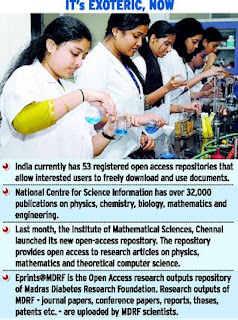The Centre for Women’s Development Studies, New Delhi, develops, promotes and disseminates knowledge about women’s roles in society and economic trends which affect their lives.
Pliloting a trend: A woman drives a metro train in Bangalore.
Those who are interested in carrying out serious research on women’s issues can gainfully utilise the rich infrastructure and enlightened and committed faculty in the unique Centre for Women’s Development Studies in New Delhi.
The centre was established in 1980. The initiative had come from a group involved in the preparation of the first comprehensive government report on the “Status of women in India.”
Later on, the members of the group were associated with the Women’s Studies Programme of the Indian Council of Social Science Research (ICSSR). The Advisory Committee on Women’s Studies of the council recommended the need for an autonomous institute to build on the knowledge already generated, but with a wider mandate and resources to expand its activities in research and action. This was taken up by the Women’s Bureau of the Union Ministry of Social Welfare. This in brief is the genesis of the Centre for Women’s Development Studies, 25, Bhai Vir Singh Marg, New Delhi – 110 001; Website: www.cwds.org. The centre is supported by the ICSSR.
Develops, promotes and disseminates knowledge about women’s roles in society and economic trends which affect women’s lives and status.
Organises and assists training programmes in the field; collaborates with institutions engaged in allied activities, especially in areas where under-privileged women are involved.
In a nutshell, the centre is a catalyst in assisting women in realising their full potential and exercising their active influence on society and its transformation. It discourages any action that marginalises women’s role in, or contribution to, society. Women’s special needs such as maternity protection, child care, literacy education and expanding employment opportunities are being focussed.
The mainstay of the centre since its inception has been research. “Women’s studies” is not a simple entity of one dimension, but it involves facing the rigours and challenges in a broad interdisciplinary field of scholarship. Research has to be responsive to contemporary problems and new questions demanding investigation.
The centre makes regular studies and goal-oriented research on a wide range of topics that are intimately connected with women’s problems, and steps to empower them to be strong participants in nation-building. Even issues that may look unimportant in the first look may have immense impact on the roles of women in society. Let us take some of the topics that are/were studied at the centre to get a clear picture of the opportunities that await future students and researchers at the centre.
The special issues concerning women’s healthcare, such as coverage, type of service-providers, nature of service provided, monitoring and evaluation mechanisms, sustainability and equity, were identified. The role of the private sector in healthcare is on the rise in our country. A judicious mix of the private and the public sectors can meet the requirements of low-income groups among women effectively. Studies based on PPP (public private partnerships) were held, analysing different health areas affecting women’s life.
This is an interesting study of motivation, compulsions and women’s experiences of domestic migration.The primary focus has been on labour migration rather than demographic movements. Changes in personal and work lives and identification of the new possibilities and tension generated by migration were analysed.
There is significant impact on family relations, economic structures and a broad range of citizenship rights. There is a paradox of a high rate of female migration along with a falling rate of female work participation.The field surveys conducted in 17 States showed an inexplicable jump in the rates of marriage migration. This deserves a detailed study and exploration. Higher education, gender and discrimination:
Study on the relationships between higher education, gender and discrimination is made with some comparison between the conditions in India and China.
Though there are several initiatives in this area, questions of gender are often forgotten. Women’s participation in higher education is sometimes shaped by the interlocking markets of labour, education, and marriage. factors such as class, region, caste and community also become significant in shaping women’s higher education.
The study demonstrates how the multidimensional nature of care-giving and its quantitative or qualitative time and labour demands are not recognised.
The findings suggest a stratified familialism in care practices owing to the differences in time available to family members for care. (Familialism is an ideology that promotes the ‘nuclear family.’)
Care becomes reduced when mothers in poor families go for paid work. Crèches and pre-schools may be beyond their reach. However, women from the elite and upper middle classes can break out from the gendered moulds.
Official denial of the time and skill requirements of care, along with the non-recognition of women’s multi-layered work, adds to women’s burden.
This issue has to be addressed to liberate women and ensure justice to them.
Some of the other areas explored are:
Adverse child sex ratio in North-West India.
Globalisation and women’s work.
Multiple vulnerabilities and marginal identities: exploring violence in the everyday lives of women with disabilities.
Gender and democratic governance.
Study on women migrants of Tamil origin in France.
Women in Indian engineering: An analysis of graduate degree level education.
Gender, status, and migration of Malayali nurses.
From oppression to assertion: Women and Panchayats in India.





